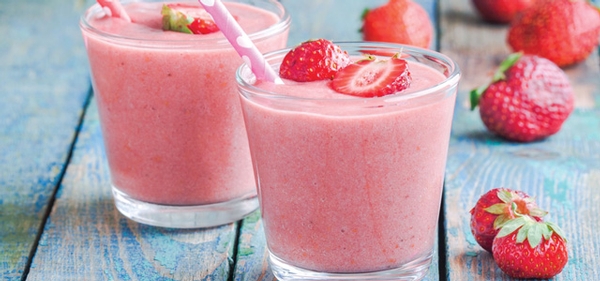What’s in This Stuff? An Update on FDA’s Policies and Enforcement Actions Concerning Novel Ingredients in Food and Dietary Supplements

In early 2014, we wrote a short article for Food Safety Magazine about two guidance documents the U.S. Food and Drug Administration (FDA) had recently issued, entitled Distinguishing Liquid Dietary Supplements from Beverages and Considerations Regarding Substances Added to Foods, Including Beverages and Dietary Supplements.[1] At the time, we hypothesized that the release of these documents could signal an upcoming wave of enforcement. While there have been some ripples, the predicted tsunami has yet to materialize. However, there have been somewhat-related waves concerning the use of certain novel ingredients in dietary supplements. In this article, we will dive deeper into the details of these guidance documents and discuss some recent FDA enforcement actions in the ingredient space.
Part 1: Liquid Food vs. Supplement Guidance
Distinguishing Liquid Dietary Supplements from Beverages lays out the many factors that FDA will consider when determining whether a liquid product is being represented to consumers as a dietary supplement or a traditional beverage. This distinction is of the utmost importance, since under the Federal Food, Drug, and Cosmetic Act of 1938 (the FD&C Act), a dietary supplement cannot “be represented as a conventional food.” The regulatory requirements that apply to each category of product are vastly different, and ingredients that are allowed to be “dietary ingredients” in dietary supplements may not be legal to use in a conventional food. If a company markets its product in one category, but FDA concludes that it rightly belongs in the other, that company could have a misbranded or adulterated product on its hands and open itself up to government enforcement.
The guidance assigns no particular weight or priority to any of the factors. Instead, as with many other FDA considerations, the sum is greater than any individual parts, meaning that FDA will consider the entire context in which the product is presented to consumers. We will briefly address each factor in the order they appear in the guidance document.
Labeling and Advertising: The first factor is the most traditional consideration and emphasizes that “FDA considers statements and graphics on product labels, labeling, and advertising, including websites and social media, when the agency evaluates the intended use of the product and how it is represented.” FDA notes that graphics can also represent a product as a conventional food.
Product Name: According to the second factor, FDA believes product or brand names that use conventional food terms such as “beverage,” “drink,” “water” or “soda” represent the product as a conventional food. Other terms that generally would be considered to represent a liquid product as a conventional food when used in the product’s name are beverage names such as “orange juice,” “apple cider,” “bottled water,” “iced tea” and “coffee.” The significance of the product name depends on the context in which it is used. On one hand, FDA acknowledges that the mere use of such a term in a product name or brand name may be sufficient to establish that a product is represented for use as a conventional food. However, in other situations, especially when the use of a term is not exclusively associated with describing conventional foods, its use in the product name would probably be evaluated in the broader context of other factors.
Product Packaging: FDA believes that packaging can convey messages about how the product is intended to be used. Packaging characteristics that should be considered include the size, shape, color and design of the packaging, the volume of liquid it holds, whether it is reclosable or designed to be consumed in a single serving, and the similarity of the packaging to packaging used for common beverages.
Serving Size and Recommended Daily Intake: FDA’s position is that liquid products that suggest through their labeled serving size and/or recommended daily intake (RDI) that they are intended to be consumed in amounts that provide all or a significant part of the entire daily drinking fluid intake of an average person in the United States are effectively being represented as conventional foods. Even if a product is not expressly represented as an alternative to a beverage, when the practical result of the labeled serving size and/or total RDI is that the product is used as a beverage or replaces beverages that serve as ordinary sources of drinking fluid, it will be considered to be a beverage.
Recommendations and Directions for Use: Recommendations or directions to use a product for certain uses, such as a “thirst quencher,” can be considered recommendations or directions to use that product as a conventional beverage. In contrast, recommendations or directions to use a liquid product to supplement the diet in a manner consistent with other dietary supplements could be a factor in determining that the product is not represented as a conventional food, even if the packaging is similar to packaging used for beverages.
Marketing Practices: This broad term relates to any marketing practices that favorably compare the product with a category of beverages. This may mean marketing the product as an accompaniment to a meal or based on typical beverage uses like taste, refreshment and thirst-quenching ability. It may also include marketing practices that are less apparent to the consumer, such as the use of metatags that results in the product appearing in the results of an electronic search for conventional beverages, or paying for the product to be displayed in the beverage section of retail stores. FDA does concede that simply recommending that a liquid product be taken with a meal would not generally be considered to represent the product as a conventional food, and promoting a product as a substitute for a beverage would not always represent the product as a conventional food.
Composition: FDA dedicates the most space to discussing this factor, for good reason. The agency’s treatment of this factor makes clear that while it recognizes that there are areas of overlap between the ingredients of some dietary supplements and conventional foods, it does not believe that the overlap was intended to be complete and it pays a considerable amount of attention to the specific regulatory history of the Dietary Supplement Health and Education Act of 1994 (DSHEA) to support its position. Notably, FDA asserts, “Given that some conventional foods are consumed primarily for taste rather than for nutrition or health-related purposes, it would strain common sense to interpret DSHEA as authorizing the creation of a dietary supplement whenever any dietary ingredient is added to any conventional food.” Further emphasizing its stance, FDA states, “Merely adding an ingredient listed as a dietary ingredient in Section 201(ff)(1) of the FD&C Act to a product universally recognized as a beverage does not by itself transform that beverage into a dietary supplement. For example, adding a botanical such as ginkgo to Kool-Aid or nonalcoholic eggnog would not automatically create a product that could be marketed as a ‘ginkgo supplement.’” Finally, the agency reminds marketers that “a dietary ingredient that is lawful for addition to dietary supplements may or may not also be lawful for addition to conventional foods” and vice versa. We will have more on that below.
Other Representations about a Product: This final catchall provision includes statements made in publicly available documents, such as filings with government agencies like the U.S. Securities and Exchange Commission or the U.S. Patent and Trademark Office.
Part 2: Novel-Ingredient Guidance
In this important guidance document, FDA reminds the food industry that the composition of a product matters. It states the dual purposes of the guidance as “to remind manufacturers and distributors of conventional foods about the requirements of the FD&C Act regarding substances added to conventional foods, including beverages” and “to remind dietary supplement manufacturers and distributors that the same requirements apply to certain substances that are added to dietary supplements—namely, those that are not dietary ingredients as defined in Section 201(ff)(1) of the FD&C Act [21 U.S.C. Section 321(ff)(1)].” Thus, unlike most FDA guidance documents, this document provides no new analysis or changes to FDA’s treatment of these products or these issues but instead simply restates many important regulatory principles concerning ingredients in foods and dietary supplements.
The document explains that if a substance is not generally recognized as safe (GRAS) and does not qualify for any other exemptions from the food additive definition, it is a food additive. Food additives require premarket approval, frequently through an industry member-initiated food additive petition, and then, if approved, FDA issues a regulation specifying the conditions under which an additive has been demonstrated to be safe and, therefore, may be used legally. Any unapproved food additive used in a beverage or other conventional food causes the food to be adulterated under the FD&C Act and prevents it from being marketed legally in the U.S.
Turning to the issue of GRAS ingredients, FDA expressed concern that some of the novel ingredients that are being added to conventional foods (including beverages) for their functional effects may cause the foods to be adulterated because while the ingredients may be GRAS in some amounts and for some uses, they may not be GRAS for these uses in foods.
Regarding dietary supplements, FDA noted that dietary ingredients are exempt from the food additive definition. While a dietary ingredient need not be GRAS, it must not cause the product to be adulterated. On the other hand, other ingredients in supplements—fillers, binders, etc.—are not exempted and must be used in accordance with an approved food additive regulation or be GRAS for their intended use.
Part 3: The Impact
Since the release of these guidance documents, there has not been a significant uptick in FDA enforcement against products for issues that seem to be directly related to these documents. There has, however, been some movement in the area.
Products Represented as Conventional Foods
Shortly after the guidance documents were issued, in March 2014, FDA sent a warning letter to Denwar International BMC Inc. in which it concluded that the company’s line of products, called Lean Slow Motion…Potion, were both adulterated and misbranded.[2] As part of its reasoning, the agency argued that despite using the term “dietary supplement” on the labels, the products were described as beverages elsewhere on the label, compared to other popular beverages on the product website and sold in single-serving, pop-top aluminum cans similar to the packaging of carbonated soft drinks. Further, the letter noted that melatonin, listed as an ingredient in the products, is not subject to any regulation approving its use in food and is not GRAS. In March 2015, FDA issued a similar letter to Bebida Beverage Co. regarding its Koma Unwind Liquid Relaxation product.[3] Again, FDA concluded that the inclusion of melatonin in the product made it adulterated. Furthermore, the packaging and repeated references to the product as a “beverage” indicated that it was not a dietary supplement and therefore misbranded.
In January 2015, FDA issued a warning letter to NYSW Beverage Brands Inc. regarding a number of their dietary supplement products, including VBlast Acai Berry, VBlast Wildberry and VBlast Tropical Punch.[4] Although the letter primarily focused on the company’s noncompliance with dietary supplement current Good Manufacturing Practices regulations, the letter first noted that FDA was not convinced that the products should be considered dietary supplements in the first place. Pointing to the labels of the products, FDA explained that although the products bear “Supplement Facts” panels, the terms “water” and “punch” were used in the statements of identity for the products and the recommended intake was 500 mL, a significant part of the daily fluid intake for the average consumer. The similarity of the products’ packaging to conventional beverage products, such as vitamin waters, was also noted.
Ingredients Not GRAS/Approved for Use in Foods
In July 2015, FDA sent a warning letter to the Ten Ren Tea Company concerning distribution of tea products that were adulterated due to an unapproved food additive.[5] FDA asserted that a number of the tea products manufactured by the company listed stevia leaf as an ingredient. Although certain purified stevia leaf extracts are approved food additives, stevia leaf itself is not GRAS and is not an approved food additive. FDA noted that while it has received inquiries and petitions for the use of whole-leaf stevia or its crude extracts in food, that evidence was insufficient to support a conclusion that those ingredients were safe, and consequently, the products were considered adulterated.
Ingredients Not Allowed in Dietary Supplements
While there has not been much recent FDA enforcement against novel ingredients in conventional foods, there has been significant FDA enforcement against dietary supplements based on ingredients.
For example, in April 2015, FDA issued warning letters to 14 companies regarding a total of 17 dietary supplement products containing DMBA (1,3-dimethylbutylamine) as a dietary ingredient. In the letters, FDA outlines several reasons why a supplement containing DMBA is considered adulterated.
First, the agency maintains that even if the ingredient meets the regulatory definition of a dietary ingredient, it would be considered a “new” dietary ingredient (meaning it had never been used in a supplement before DSHEA was passed in 1994), and consequently, the company would have needed to submit a notification to the agency regarding its safety prior to introducing it into the market. Second, FDA reasons that even if the required notification had been submitted, it was not aware of any safety data establishing that a product containing this ingredient should not be considered adulterated, and had no reason to believe that such support existed. Finally, FDA points out that use of a synthetic version of the ingredient would exclude it from the definition of “dietary ingredient” because it is not a vitamin, mineral, amino acid, herb or other botanical; commonly used as human food or drink; or a concentrate, metabolite, constituent or extract.[6]
A similar set of letters were issued to seven dietary supplement companies about the use of methylsynephrine, also known as oxilofrine or p-hydroxyephedrine, in their products. The ingredient is a known banned substance in most sports due to its performance-enhancing properties. FDA follows the same analysis found in the DMBA letters, ultimately concluding the substance “is not approved as a food additive or prior sanctioned for use in dietary supplements” and “FDA’s review of this substance does not identify a basis to conclude that the substance is GRAS for use in food.”[7]
Another set of warning letters demonstrate the importance of researching the history of any ingredient a company would like to use in its product, including its history of use in clinical studies. If an ingredient has been authorized for investigation as a new drug for which substantial clinical investigations have been instituted and for which the existence of such investigations has been made public, and it was not used as a dietary ingredient before such investigation, it cannot be used as dietary ingredient in a dietary supplement.
That seldom-cited provision was the basis for eight warning letters FDA sent in February 2016 to companies that marketed dietary supplements containing cannabidiol (CBD). CBD is one of over 60 compounds found in the cannabis plant that belong to a class of molecules called cannabinoids. Of these compounds, CBD and tetrahydrocannabinol (THC) are usually present in the highest concentrations and are therefore the most recognized and studied. However, unlike THC, CBD is nonpsychoactive and therefore does not cause a “high.” In the 2016 letters, FDA observes that CBD had been studied in an FDA-approved investigatory new drug study and was therefore excluded from use in dietary supplements.[8]
Part 4: What Does This All Mean?
These guidance documents and enforcement actions perhaps show a changing of the guard in terms of FDA’s focus and concern about the use of novel ingredients in foods and dietary supplements. The increasing use of botanicals, synthetic chemicals and other unconventional ingredients throughout the industry has placed these issues at the forefront of the agency’s priorities. Industry members should ensure that their product development process includes a robust regulatory review—both in terms of the appropriateness of the ingredients they intend to use and the representations they intend to make. In other words, know “what’s in this stuff” and ensure that it is all allowed for the type of product you intend to market.
Ivan J. Wasserman, Esq., is a partner in the advertising, marketing and media division of the law firm Manatt, Phelps & Phillips.
La Toya C. Sutton, Esq., is an associate in Manatt’s advertising, marketing and media division.
References
1. www.food-safety.com/enewsletter/whate28099s-in-this-stuff-fdae28099s-recent-guidance-on-dietary-supplements-and-novel-ingredients/.
2. www.fda.gov/ICECI/EnforcementActions/WarningLetters/ucm390967.htm.
3. www.fda.gov/ICECI/EnforcementActions/WarningLetters/ucm440953.htm.
4. www.fda.gov/ICECI/EnforcementActions/WarningLetters/ucm429530.htm.
5. www.fda.gov/ICECI/EnforcementActions/WarningLetters/2015/ucm456908.htm.
6. www.fda.gov/ICECI/EnforcementActions/WarningLetters/2015/ucm444410.htm.
7. www.fda.gov/ICECI/EnforcementActions/WarningLetters/2016/ucm493994.htm.
8. Interestingly, FDA also published its testing results for the products that were the subject of these letters, which showed that many of them did not contain the levels of CBD they claimed to contain.
Looking for a reprint of this article?
From high-res PDFs to custom plaques, order your copy today!








